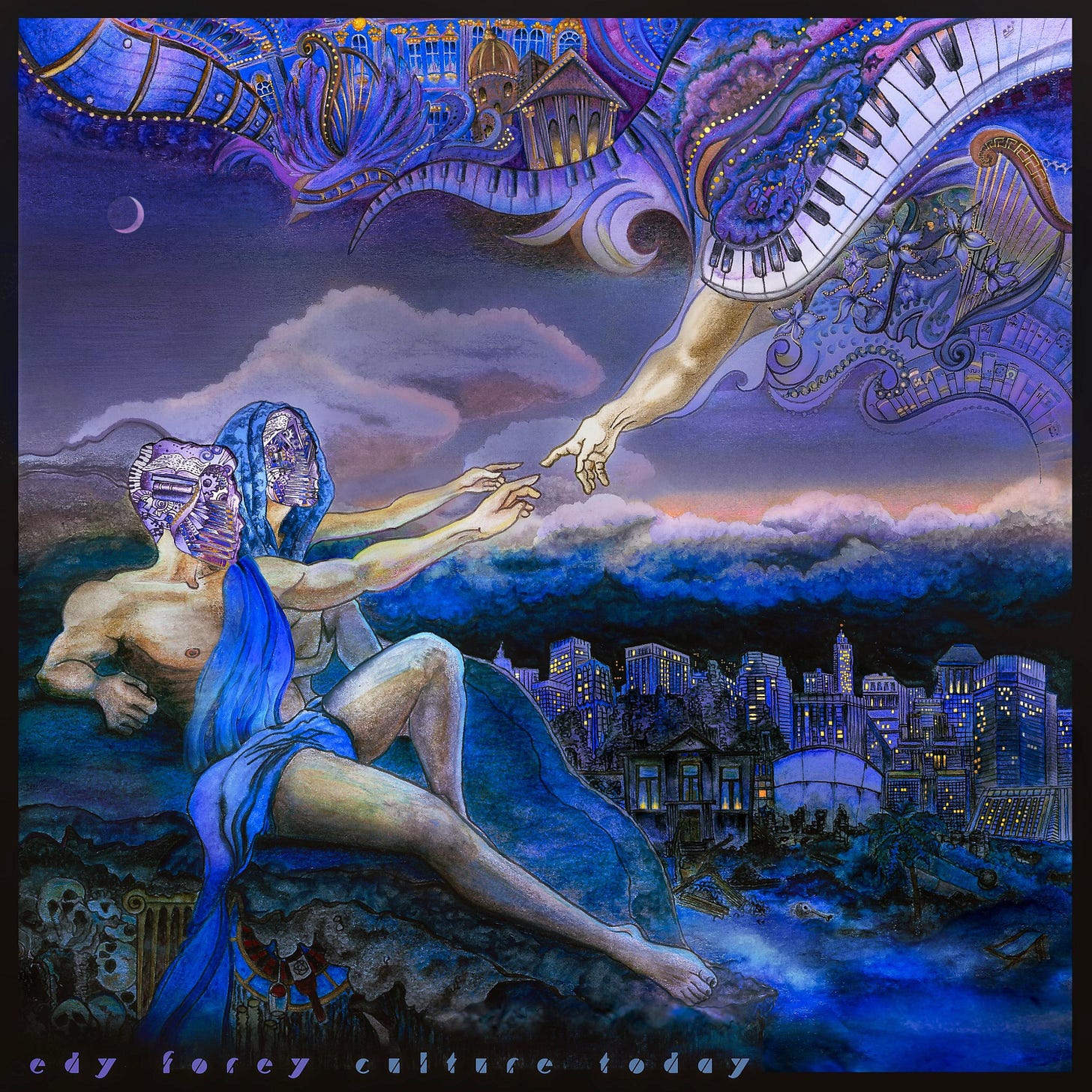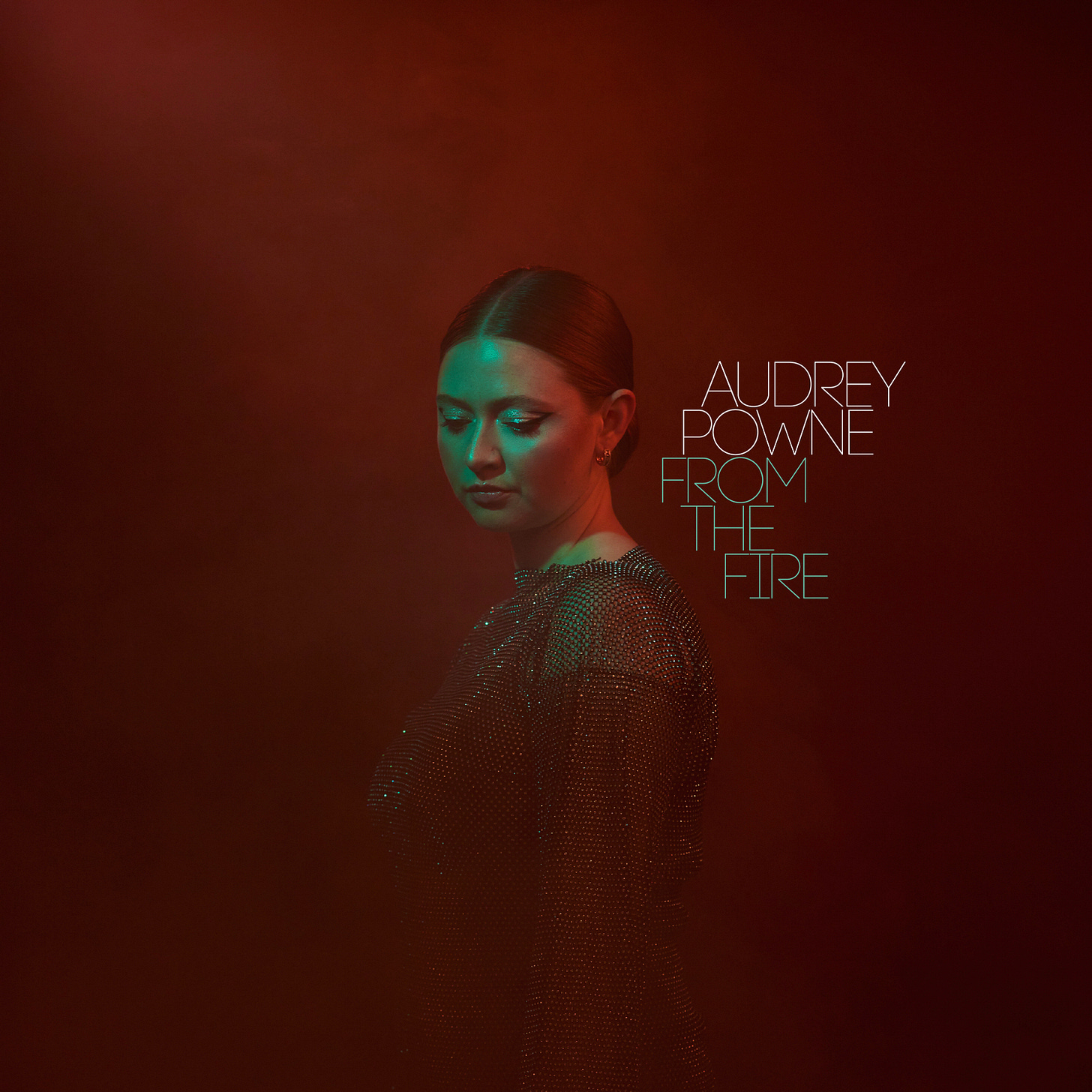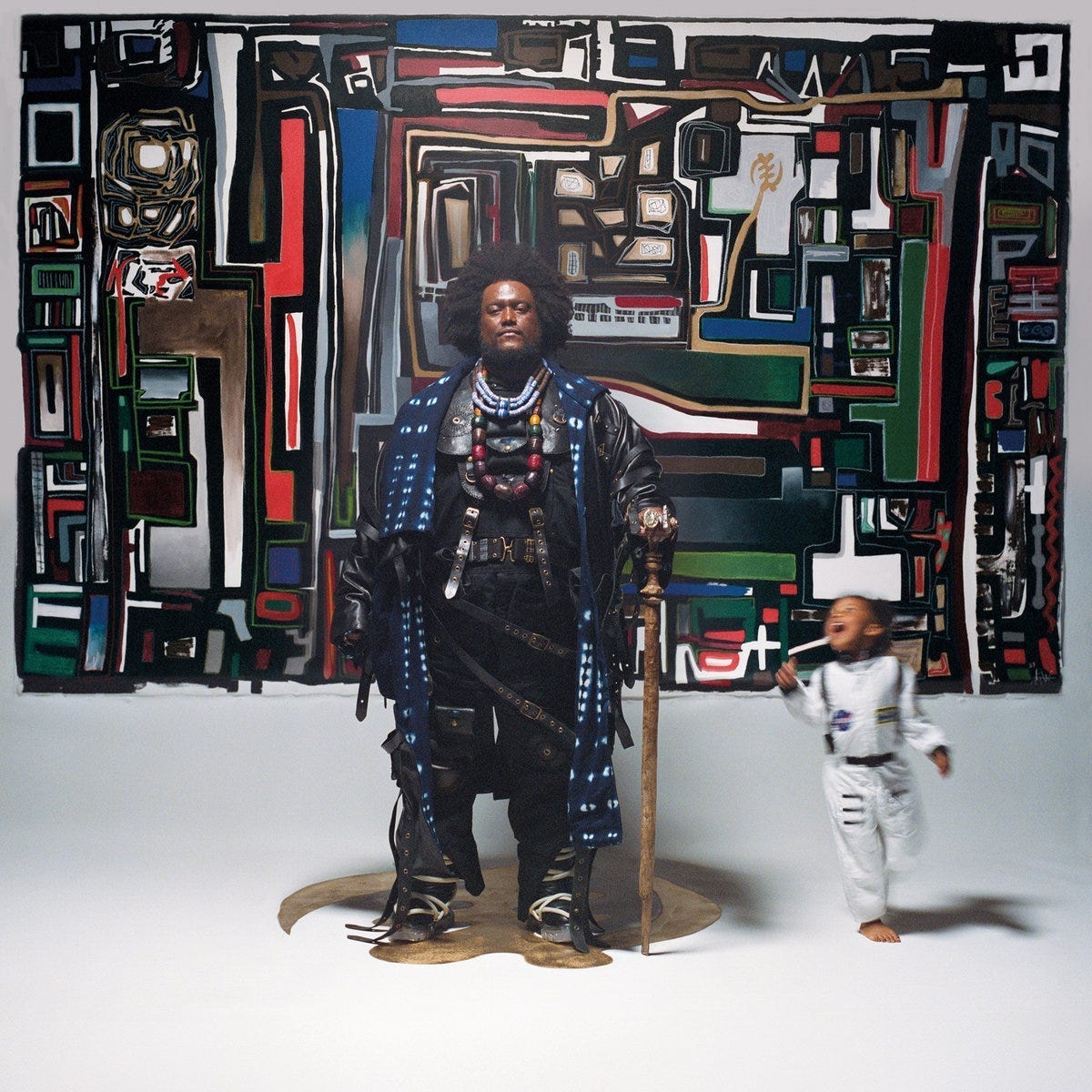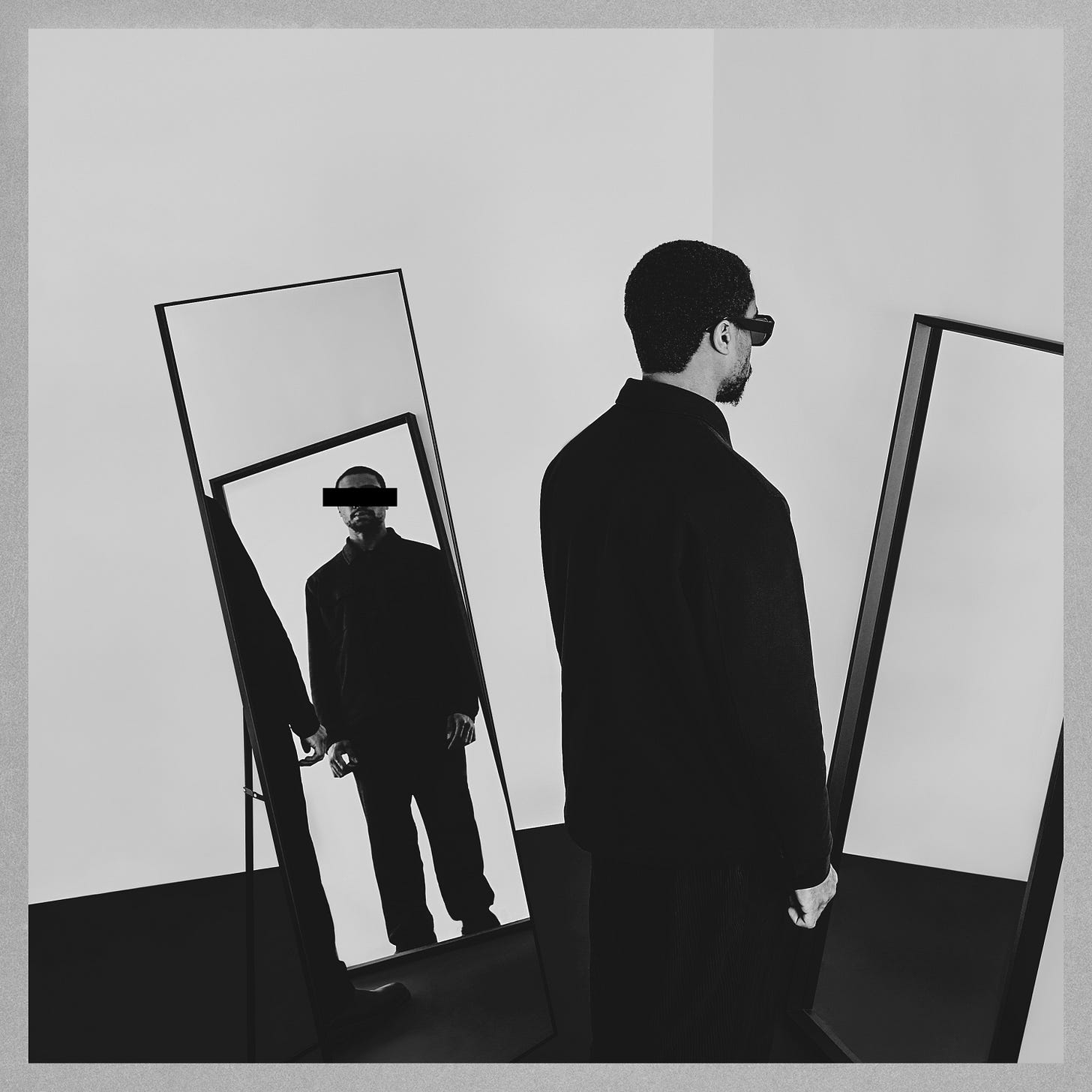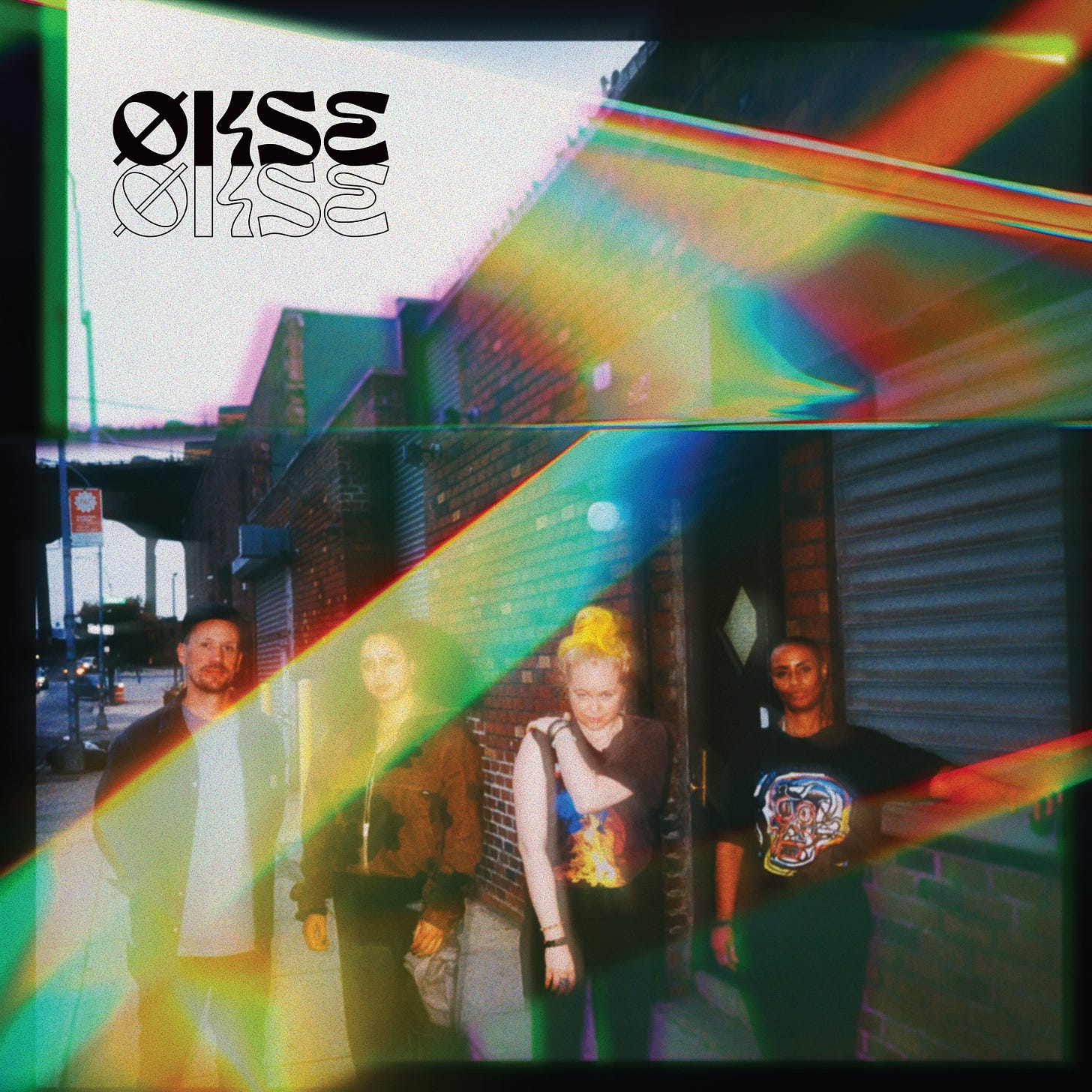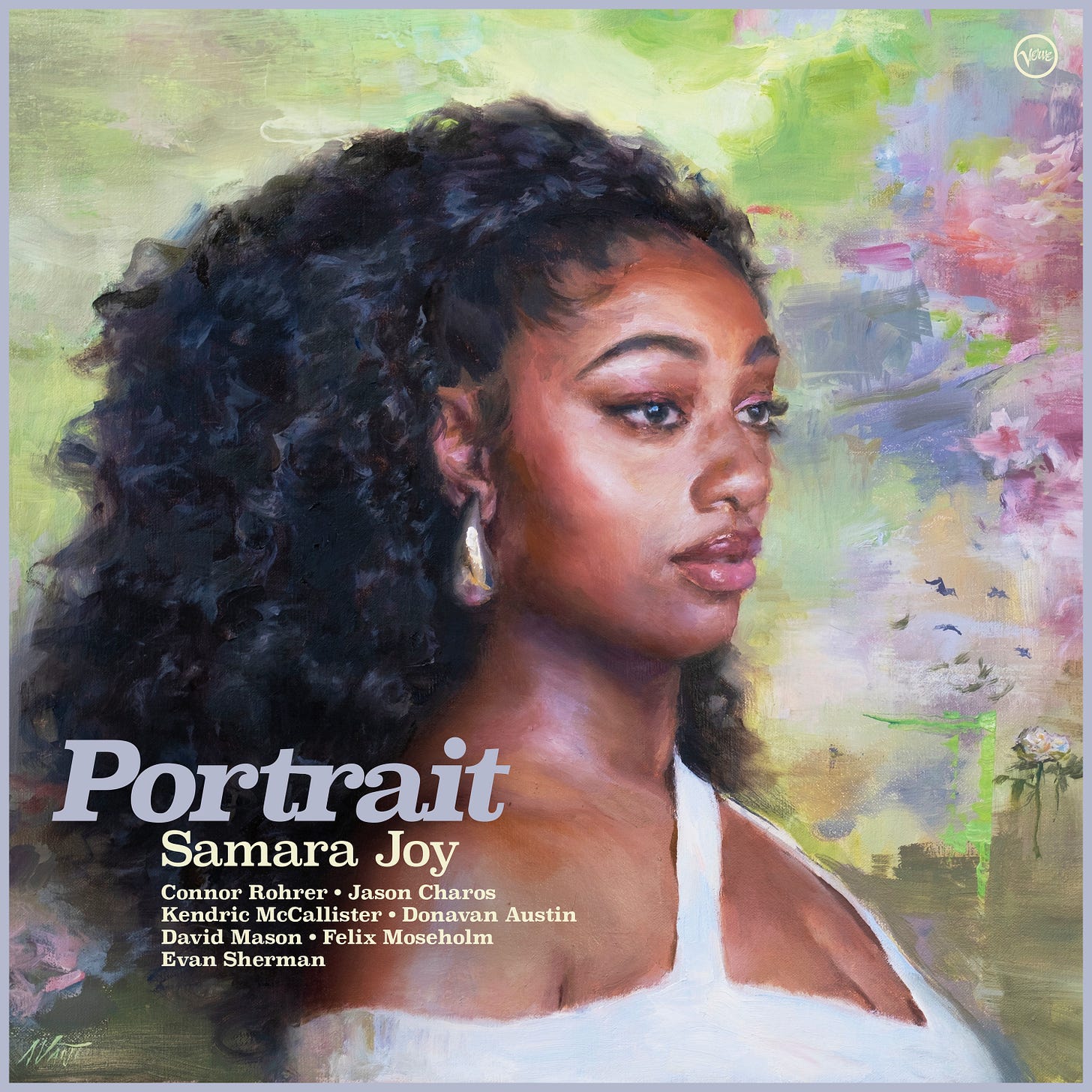The 37 Best Jazz Albums of 2024
These jazz artists crafted the year’s most exciting albums by surpassing conventional limits and partnering with fresh contributors.
Jazz continuously reinvents itself, appearing in surprising new forms connected to its roots by only the most essential threads. This dynamic genre appears in places we might not anticipate and in shapes that catch us off guard. Some artists featured here might not even classify their music as jazz. Perhaps we shouldn’t either. Let’s recognize these albums for what they truly are: groundbreaking creations, daring experiments, and—despite the challenges around us—sources of hope. This year, the diverse branches of jazz have produced inspiring works, many highlighted below.
Keyon Harrold: Foreverland
Keyon Harrold returns with a new musical adventure in his latest album, building upon the diverse fusion he established with his 2017 release, The Mugician. This new album, Foreverland, diverges from its predecessor by focusing more on balladry and exploring the intricate dynamics of romantic relationships. The collaborators Harrold brings on board for this album play a significant role in shaping its sound, blending in effortlessly to create a cohesive musical experience. A notable aspect of Harrold’s work is his exceptional trumpet playing. In Foreverland, Harrold’s mastery of the trumpet shines brightly, continuing his streak of producing high-quality albums that highlight his remarkable talent. — Brandon O’Sullivan
Lawrence Fields: To the Surface
Bassist Yasushi Nakamura and drummer Corey Fonville align flawlessly with Lawrence Fields, forming a cohesive trio. Each note resonates deeply, flowing effortlessly into the next and building toward a series of breathtaking climaxes. The sophistication of this modern straight-ahead piano session reaches exceptional heights. Given the esteemed musicians with whom Fields has previously partnered, such mastery is anticipated. Nonetheless, despite any prior expectations, it’s entirely understandable to be awe-struck by the pianist’s debut. — Nehemiah
Vijay Iyer, Linda May Han Oh & Tyshawn Sorey: Compassion
Vijay Iyer’s lifelong dedication to social history culminates in his instrumental album Compassion. This work showcases his commitment, presenting melodies that reflect years of immersion in his craft. Drawing inspiration from Coltrane’s blend of despair and optimism on “My Favorite Things,” Iyer achieves an electrifying effect, especially on “Maelstrom,” where his arpeggios create a harmonious dialogue. The album’s deliberate pacing and thoughtful structure prevent it from feeling like a simple collection of commissioned pieces. Compositions flow seamlessly, forming a cohesive whole. The dissonant “Nonaah,” a cover of Roscoe Mitchell’s work, introduces a raw intensity that contrasts the album’s otherwise melodic atmosphere. After a series of fluid pieces, “Panegyric” moderates the tempo, adding depth to the album’s progression. — LeMarcus
DJ Harrison: Shades of Yesterday
DJ Harrison of Butcher Brown reveals his deep admiration for Black music through every project, openly showcasing his inspirations and affirming his place in its rich heritage. On his third album with Stones Throw, the Virginian artist presents a funky, raw collection of covers, handling almost all the instrumentation himself. Handling mid-‘70s fusion classics with flair, Harrison pays homage to Eddie Henderson’s dark Afrofuturist groove “Galaxy” (1975), showcasing mind-bending synthesizer work akin to George Duke. The fullness of the low end makes the absence of bass clarinet unnoticeable. His take on Stevie Wonder’s complex “Contusion” (1976) is almost half the original length, perhaps to spare himself from exhaustion. He deconstructs and reimagines them during the creative process, allowing himself and the audience to rediscover the music. — Harry Brown
Joel Ross: Nublues
Vibraphonist Joel Ross invites us into a serene soundscape with his fourth Blue Note album, 2024’s Nublues, an intimately crafted work that follows 2022’s The Parable of the Poet. Joined by his ensemble—which includes longtime collaborator alto saxophonist Immanuel Wilkins, pianist Jeremy Corren, bassist Kanoa Mendenhall, drummer Jeremy Dutton, and guest flutist Gabrielle Garo—Ross presents a warm collection of original compositions and jazz standards. Ross and Wilkins interlace harmonies that evoke the tranquility of a rainy Sunday morning. This piece transitions seamlessly into a gently swaying rendition of John Coltrane’s classic modal composition “Equinox.” This blend of original works and deep-rooted jazz influences sets the tone for the rest of the album. — Jamila W.
Amaro Freitas: Y’Y
Amaro Freitas crafted this work following a 4,600-kilometer journey to the Amazonian wilderness of Manaus. Y’Y is structured in two distinct parts. The initial section explores Freitas’ spiritual connection to nature, ancestral spirits, and the earth. In contrast, the latter half emphasizes his ties to global Black music traditions. Throughout, Freitas aims to unearth pre-colonial elements. Freitas’ extensive trek through the Amazon inspired the album’s creation. This experience profoundly influenced the work’s environmental consciousness and spiritual reverence themes. Y’Y presents a unique reflection on these subjects, along with an examination of ancestral history. Despite its complexity and occasional enigmatic qualities, Y’Y remains engaging. The album combines solo performances with collaborative pieces, creating a diverse musical landscape. Its structure allows for a deep exploration of Freitas’ artistic vision, bridging personal experiences with broader cultural themes. — Reginald Marcel
Julian Lage: Speak to Me
On his third Blue Note release, Speak to Me, Julian Lage embraces a wider musical palette, crafting lyrical arrangements that adapt fluidly to each composition’s demands. This album showcases some of his career’s most relaxed and inspired performances. The journey begins modestly with “Hymnal,” a delicate, fluttering piece that resembles a warm dialogue between Lage and bassist Jorge Roeder. This serene introduction is swiftly contrasted by the eccentric rhythms of “Northern Shuffle,” the most free-spirited and funky track on the record. Joe Henry, the esteemed folk and Americana producer and songwriter, is at the helm of production. His subtle yet assured guidance ensures that the songs remain accessible while retaining their artistic depth. Adding another dimension to Lage’s ensemble is Patrick Warren, a veteran keyboardist and composer renowned across rock and film music but seldom heard in jazz. Warren’s ethereal string embellishments and textural contributions on instruments like the dulcitone and Wurlitzer electric piano imbue the ensemble pieces with an unexpected and welcome cinematic quality. — Murffey Zavier
Mildlife: Chorus
On their third studio album, Chorus, Mildlife ventures further into the dynamic sphere of jazz-funk fusion. This Melbourne quartet—vocalist and synth player Kevin McDowell, guitarist Adam Halliwell, bassist Tom Shanahan, and percussionist Jim Rindfleish—digs deeper into the celestial undertones introduced in 2020’s Automatic, embracing the intuitive riches of improvisation with adept proficiency. The opening track, “Forever,” unfolds at its own pace, layering prominent bass lines, hand drums, and falsetto vocals before introducing a luminous synth lead and trippy vocoder effects. The album has deliberate unhurriedness; “Sunrise” evolves like a slow-motion stadium disco, inviting listeners to roam through its soundscapes. Two tracks even surpass the nine-minute mark, with the flute-accented title track and the prog-inclined closer “Return to Centaurus” standing out as some of the most engrossing segments. Here, the four musicians lock into a shared groove, exploring their collective sound with a zealous confidence that’s unquestionably well-earned. — Brandon O’Sullivan
Amirtha Kidambi’s Elder Ones: New Monuments
Amirtha Kidambi channels raw defiance and personal narrative in New Monuments, crafting an evocative homage to the late avant-jazz trumpeter jaimie branch. She melds the dissonance of experimental jazz, the precision of European chamber music, and the intricate rhythms of Carnatic traditions to create an aural landscape that confronts colonialism and oppression directly. The album, created in collaboration with the branch’s trusted ensemble, interlaces dark psychedelia with her electrifying vocal range, transforming global struggles into personal declarations. As a Tamil immigrant, Kidambi imbues her own experiences, directly addressing events like the 2021 Atlanta spa shootings and the farmers’ protests in India, making the politics deeply personal. Despite the album’s somber tones, an undercurrent of fortitude and determination pulses throughout, culminating in a collection that embodies a cry of protest and an emblem of solidarity. — Phil
Amanda Whiting: The Liminality of Her
From the first ethereal harp notes, Amanda Whiting’s The Liminality of Her draws you into a hypnotic fusion where jazz intertwines with the mystical. She fuses delicate harp melodies with dynamic jazz rhythms, conjuring mesmerizing soundscapes influenced by London’s underground dance scene and the pioneering artistry of Dorothy Ashby and Alice Coltrane. The sophistication and atmosphere of her sound resonate in “Liminal” and “Rite of Passage” as she reshapes jazz’s boundaries and carves her artistic vision into the genre. Whiting distinguishes herself as a singular voice, blending tradition with innovation to craft an enchanting album. — Imani Raven
Edy Forey: Culture Today
Debuting with the album Culture Today, Scotland’s Edy Forey—a duo comprising Polish vocalist Edy Szewy and French pianist Guilhem Forey—melds their diverse backgrounds to create a distinctive fusion of genres. Their sound intertwines the soulful essence of 1970s rhythm and blues with the grooves of modern jazz and contemporary pop. “The Fire,” one of the album’s lead singles, is a smooth jazz composition infused with gospel influences, neo-soul vibes, and understated drama. Szewy’s falsetto in the bridge adds a chilling effect, and Forey’s piano solo incorporates blues, bop, and bossa nova elements. Following this is their rendition of Eden Ahbez’s classic “Nature Boy,” reimagined as a piece of futuristic jazz expressionism. Forey honor the jazz tradition as an urban music form that stands alongside—not separate from—soul, R&B, funk, gospel, and even indie pop. — Harry Brown
Red Hot Org & Meshell Ndegeocello: Red Hot & Ra: The Magic City
The COVID-19 pandemic prompted Meshell Ndegeocello to explore John Szwed’s 1998 biography of Sun Ra, Space Is the Place: The Lives and Times of Sun Ra. This encounter profoundly affected her, influencing her 2023 album The Omnichord Real Book and driving the creation of Red Hot & Ra: The Magic City. As the third installment in RHO’s Sun Ra tribute series, The Magic City features only original compositions. Ndegeocello, acting as producer and orchestrator, assembled a diverse group of musicians versed in Sun Ra’s musical language. The ensemble spans generations, from 99-year-old saxophonist Marshall Allen to 19-year-old drummer Kojo Roney. Unlike previous volumes in the series, The Magic City doesn’t merely draw inspiration from Ra’s songs. Instead, it offers a unique dialogue with his cosmic musicality, informed by dreams, visions, and experience. Ndegeocello’s studio cast included saxophonists Immanuel Wilkins and Darius Jones, longtime collaborator guitarist Chris Bruce, clarinetist Stuart Bogie, and drummer Deantoni Parks. This collaborative effort resulted in a work transcending simple tribute, embodying a transformative musical conversation with Sun Ra’s legacy. — Brandon O’Sullivan
Lizz Wright: Shadow
Shadow marks Lizz Wright’s 25th year as a professional artist and debuts on her Blues & Greens label. This album features more original compositions than her 2017 release Grace, which focused on covers under Joe Henry’s production. Guitarist Chris Bruce strengthens his role as producer on Shadow, collaborating with Wright on five of the eleven tracks. The album leans more heavily into blues influences than its predecessor. “Your Love” exemplifies this shift, with Meshell Ndegeocello’s bass providing a solid foundation and Brandee Younger’s harp adding subtle layers to Wright’s vocals. Wright’s interpretation of Sandy Denny’s “Who Knows Where the Time Goes” demonstrates her ability to balance intensity and subtlety. Another notable track, “Root of Mercy,” pays homage to Wright’s grandmother through evocative lyrics and a light musical touch. — Phil
Shabaka: Perceive Its Beauty, Acknowledge Its Grace
Shabaka Hutchings announced last year that he would be taking an indefinite break from playing the saxophone. This decision marked the end of his influential bands, Sons of Kemet and the Comet Is Coming, which were crucial to his acclaim. A hint of this change came in November 2022 with the release of Afrikan Culture, where Hutchings mostly performed solo using the shakuhachi, flute, and clarinet. In 2023, he introduced a cryptic blend of jazz and hip-hop with Flowers in the Dark under his alter ego, Kofi Flexxx. Perceive Its Beauty, Acknowledge Its Grace was recorded in 2022 by Maureen Sickler, and it’s unlike anything Hutchings has produced before, deriving its essence from his subconscious through his cleverness and instinct. The project features a lineup of talented musicians, including flutist Andre 3000, percussionist Carlos Nino, harpists Brandee Younger and Charles Overton, bassists Esperanza Spalding and Tom Herbert, multi-instrumentalist Miguel Atwood-Ferguson, Floating Points, and vocalists such as one of the top 25 MCs, ELUCID. — Phil
Audrey Powne: From the Fire
Audrey Powne is recognized as a versatile trumpeter and vocalist who has collaborated with prominent artists like Maceo Parker, the Teskey Brothers, Jimmy Barnes, and Midnight Oil. An integral part of Melbourne’s R&B scene, she has contributed to acts such as Leisure Centre and Au Dré. With From the Fire, Powne reaches a new height in her career. She demonstrates her multifaceted talent by singing and playing trumpet, piano, organ, and Fender Rhodes while taking on the roles of writer, arranger, and producer for the entire album. “Feed the Fire” delivers a confrontational energy, with cinematic tension created by bass and drums and a spiraling mass of strings that lift Powne’s escalating vocals in the chorus. In contrast, the title track, “From the Fire,” is a breezy ballad focusing on regeneration, where cascading electric keyboards transition into gleaming trumpet melodies. The record is designed for continuous play, beginning with a steady, sweeping overture and concluding with an intense ballad. — Harry Brown
Kamasi Washington: Fearless Movement
Kamasi Washington is known for his grandiose musical expressions that take jazz as a central motif and then venture into various directions while maintaining a cohesive entirety. This is exemplified in his expansive triple albums, The Epic and Heaven and Earth. In his first release in six years, Fearless Movement, Washington opts for a more streamlined approach by omitting choirs and orchestras, yet the album still stretches over nearly 90 minutes across 12 tracks. This project was brought to lifeng band and an array of contributors (including André 3000 and George Clinton) using his touri. Rather than merely placing instruments and sounds side by side, he meticulously integrates them, creating a vibrant fabric that exudes joy, intensity, and a profound sense of political, social, and spiritual significance. His vision is strikingly concentrated, yet it brims with a restless and playful energy. — Phil
Nubiyan Twist: Find Your Flame
With Find Your Flame, Nubiyan Twist ventures boldly into fresh musical domains, melding neo-soul, funk, jazz, and Afrobeat into an electrifying soundscape. Since their early days at Leeds College of Music, the band has continuously refined their sound, balancing discipline with depth as they navigate various musical styles. The album showcases their artistic evolution through multifaceted arrangements and stirring performances, highlighted by the rich vocals of Aziza Jaye and collaborations with luminaries like Nile Rodgers and Seun Kuti. On “So Mi Stay” and “Reach My Soul,” they seamlessly blend traditional and modern influences, demonstrating their proficiency in merging diverse styles with remarkable coherence. Find Your Flame represents a central phase in Nubiyan Twist’s progression, delivering a cohesive yet novel collection imbued with emotional depth and layered sounds, further affirming their command within their sphere. — Brandon O’Sullivan
Joy Guidry: Amen
As communities around us decline, we are reminded that self-acceptance serves a dual purpose: a personal achievement and a way to connect more deeply with those we cherish. Joy Guidry’s new album, Amen, embodies this idea by focusing on the crucial next step after personal growth: community integration. This experimental, soulful jazz record starts with an authentic expression of self, flowing effortlessly with the artist’s thoughts and desires, free from fear, shame, or doubt. Then, a chaotic yet jubilant big band bursts onto the scene, embracing Guidry’s voice into a chorus of pure energy and ecstasy, united in a call to the divine. Guidry’s deep understanding of her identity allows her to influence the group as much as they influence her, using her confidence to blend even more deeply with the community. Amen demonstrates that self-acceptance is simultaneously a destination and a beginning—an essential step in personal development and a means to forge meaningful connections with others. — Imani Raven
Morgan Guerin: Tales of the Facade
Throughout his career, Morgan Guerin has consistently aimed to serve the song above all else, even as he impresses audiences with his technical skills. His new album, Tales of the Facade, explores themes of self-reflection and unmasking hidden layers. A prime example is the track “Peace of Mind,” a smart and catchy tune with the potential for widespread appeal. Guerin crafts distinctive accompaniments as a producer to highlight vocalists Georgia Anne Muldrow, Zacchae’us Paul, Melanie Charles, and Kokayi, aligning with the album’s central themes. Through his music, he mirrors his personal growth, solidifying his place as a leading figure among a new generation of multi-instrumentalists — Harry Brown
Carlos Niño & Friends: Placenta
Carlos Niño & Friends craft a work that unfolds through shared artistic energy and spiritual anatomy. Los Angeles-based percussionist and producer Carlos Niño is ardent about musical collaboration as an art form intertwined with spiritual pursuit, an ethos rooted in his early projects with collective groups like Build An Ark. Known for ventures that skillfully blend spiritual jazz, Space Age fusion, folk, and ambient sounds, Niño’s latest undertaking explores a personal chapter inspired by the birth of his child Moss—this twelfth release with his ensemble channels an intuitive spirit of family and renewal. Gathering a montage of regular collaborators from the burgeoning experimental sphere alongside esteemed elders, the album resonates with an exploratory yet heartfelt aural palette. With artists like Sam Gendel, Adam Rudolph, and Andre 3000 contributing, Placenta is a homage to communal creativity and underscores Niño’s ongoing evolution as a trailblazer within music’s expansive setting. — Tai Lawson
Arooj Aftab: Night Reign
Arooj Aftab’s fourth album, Night Reign, marks her solo debut on Verve. Though Aftab has been recording since 2014, many Western listeners first encountered her work with 2021’s Vulture Prince. In 2023, she collaborated with Vijay Iyer and Shazad Ismaily on the Grammy-nominated Love in Exile. Night Reign showcases Aftab’s growth as an artist, with her arranging all but one track and producing the entire album. The record’s title is reflected in its pervasive nocturnal atmosphere. Aftab’s goal was to musically portray the various spirits of the night, resulting in her most experimental and captivating work to date. This approach has yielded a mature, confident sound demonstrating her artistic evolution. The album’s sonic landscape invites listeners to experience the multifaceted nature of nighttime through Aftab’s unique musical lens. — Brandon O’Sullivan
Don Glori: Don’t Forget to Have Fun
From a shared kitchen in Whitechapel to the bustling streets of London, Gordon Li—better known as Don Glori—unveils his second album, Don’t Forget to Have Fun. Born from revisiting sidelined ideas during a time of change, this collection mirrors Li’s navigation through personal challenges and creative blocks. Amidst the upheaval, the album emits an airy optimism, weaving together jazz, soul, nu-samba, and a touch of psychedelia. Li’s proficiency shines in the intricate arrangements where Brazilian rhythms intertwine with electro-funk and disco, crafting a comforting and fresh sound. Pieces like “Pause” and the ambitious three-part “Theme for a Dream” highlight his skill in composing multifaceted tracks that glide effortlessly between genres. — Javon Bailey
Nduduzo Makhathini: uNomkhubulwane
Nduduzo Makhathini goes beyond conventional paradigms of music-making to deliver his most profound exploration of creative mysticism with his eleventh studio album, uNomkhubulwane. This remarkable record, the third to be released under the Blue Note Records label following 2020’s Modes of Communication: Letters from the Underworlds and 2022’s In the Spirit of Ntu, showcases Makhathini’s expansive vision. The album is a transcendent three-movement suite dedicated to the Zulu Goddess uNomkhubulwane, delving into Africa’s harrowing history of oppression. Featuring Makhathini’s trio, with Zwelakhe-Duma Bell le Pere on bass and Francisco Mela on drums, the music serves as both an offering and an invitation for humanity to embrace ways of being that aspire towards freedom and equilibrium. — Phil
Julius Rodriguez: Evergreen
Julius Rodriguez crafts an expansive soundscape that bridges jazz with many other genres. Rodriguez is an exceptionally talented keyboardist and improviser who showcases his versatility by blending post-bop, folk, and hip-hop elements throughout the record. A devotee of vintage synthesizers, Rodriguez often channels the grand, open-air energy reminiscent of artists like Joe Zawinul and Chick Corea’s Return to Forever. This atmosphere is immediately established with the opening track, “Mission Statement,” where he layers breezy synth melodies over rhythms that evoke classic drum machine handclaps. While Rodriguez’s keyboard textures evoke the ambience of classic prog rock and fusion, his songwriting and knack for crafting memorable melodies are more aligned with contemporary pop and R&B. Amidst these imaginative productions, the album surprises with more traditional-sounding songs. In “Rise and Shine,” Rodriguez picks up the acoustic guitar to compose an intimate folk piece enriched with subtle jazz harmonies and punctuated by a lively keyboard melody reminiscent of Stevie Wonder. Equally unexpected is “Many Times,” where his sparkling piano and new-age synth touches reveal a heartfelt nod to Bruce Hornsby. — Harry Brown
Malcolm Jiyane Tree-O: True Story
On his second album, True Story, Johannesburg-based trombonist Malcolm Jiyane collaborates with a core group of musicians, including bassist Ayanda Zalekile, drummer Lungile Kunene, percussionist Gontse Makhene, and pianist-keyboardist Nkosinathi Mathunjwa, along with several guest contributors. The album revolves around the theme of life in poverty in South Africa. Its melodies deeply touch the soul, delivering simultaneous feelings of joy and sadness. The juxtaposition of these emotions enhances their impact. — Murffey Zavier
Tarbaby: You Think This America
Tarbaby unveils a new live set that showcases their diverse musical passions through concise original pieces and an array of eclectic covers. The longstanding trio consists of drummer Nasheet Waits, bassist Eric Revis, and pianist Orrin Evans. Reflecting the multiple associations of their band’s name, they explore various musical directions simultaneously. Their selection includes two Ornette Coleman compositions and a romantic interpretation of “Betcha By Golly Wow,” the classic hit by the Stylistics. The Coleman pieces showcase different dimensions of the band’s artistry. In “Dee Dee,” Evans and Revis execute the playful theme in octaves, resembling a lively game of tag where one musician is always connected to the joyous melody. Conversely, “Come Il Faut” abandons tempo, featuring a haunting melody that unfolds from Revis’s bass line and is subtly traced by Evans. Tarbaby skillfully balances the characteristics of a classic piano trio with the innovation of modern musical tricksters, cultivating a dynamic space where magic unfolds. — Harry Brown
Linda Sikhakhane: Iladi
Linda Sikhakhane’s music embodies the dynamic growth of South African jazz. The saxophonist’s sound blends contemporary vintage bop with global influences, drawing inspiration from icons like John Coltrane and Winston Mankunku Ngozi. Iladi, Sikhakhane’s latest work, presents eight original compositions that evoke a communal gathering. The album’s approach resembles a classic Blue Note session, with the trio maintaining an intense undercurrent. Sikhakhane’s deep, emotive tone flows seamlessly with this backdrop. Born in Umlazi Township near Durban, South Africa, Sikhakhane’s roots trace back to KwaNongoma. His musical journey began early, shaped by his cultural heritage and an innate affinity for sound. This background informs his current work, where he applies all he has learned and intuited. — Brandon O’Sullivan
Meshell Ndegeocello: No More Water: The Gospel of James Baldwin
Just a year after Meshell Ndegeocello’s album The Omnichord Real Book and four months since The Magic City, created in tribute to the Sun Ra Arkestra, her new work No More Water is here. This album coincides with the centennial of its subject—the great writer and civil rights activist James Baldwin. Baldwin’s book The Fire Next Time profoundly impacted Ndegeocello’s understanding of racism, classism, and their effects on her family. Inspired by this work, she conceived this piece, presenting it as a pan-African church ceremony, blending performances by instrumentalists, singers, and orators. The album constantly shifts in structure and sound. Songs unfold slowly or intensify unexpectedly, quickly moving into compositions or changing direction, interspersed with spoken interludes and asides while maintaining a sense of fluidity. Beyond funk and folk elements, the album incorporates 21st-century jazz and soul and aspects of soukous, samba, dub, and art rock. — Brandon O’Sullivan
Milton Nascimento & esperanza spalding: Milton + esperanza
A friendship sparked nearly 15 years ago has blossomed into a musical partnership, culminating in Milton + esperanza. This album, recorded in Brazil throughout last year, brings together two exceptional talents: Milton Nascimento and esperanza spalding. Sixteen tracks comprise this collection, reimagining five of Nascimento’s beloved classics, and the rest are original compositions by spalding. Their collaboration shines through in exquisite duets that showcase their iconic voices and masterful musicianship. A central theme appears in this project: the importance of intergenerational creativity, learning, and world-building. The album’s tracks celebrate the rich musical heritage of Brazil while venturing into diverse musical territories. spalding’s original compositions sit alongside reimagined classics, creating a harmonious blend of old and new. — Brandon O’Sullivan
ØKSE: S/T
ØKSE unites an international lineup of avant-garde musicians, each already notable as a solo artist. The ensemble includes NYC-based drummer Savannah Harris, Danish saxophonist Mette Rasmussen, Haitian electronic musician Val Jeanty, and Swedish bassist and synth player Petter Eldh. Together as ØKSE, they venture into new musical landscapes, challenging and redefining genre boundaries. By tapping into beats that resonate with a younger generation, ØKSE acknowledges the evolving revolutionary energy of music. Their improvisational approach produces a fresh sound that demands a rethinking of musical standards. — Phil
JAUBI: A Sound Heart
Pakistani jazz trio JAUBI’s second album, A Sound Heart, has this dynamic blend of modal and spiritual jazz with South Asian classical music. Moving beyond the personal struggles of their debut, this record explores themes of love, redemption, and forgiveness. The band, led by guitarist Ali Riaz Baqar, journeyed to London to create this multifaceted soundscape, collaborating with a group of accomplished musicians. Inspired by jazz greats and the teachings of the Quran, JAUBI developed compositions that encourage collective improvisation, allowing individual identities to fade in favor of a unified artistic expression. The album is structured to reflect the energetic and serene moods of late-night New York club sessions, with two distinct sides aptly named Desire and Devotion. JAUBI’s proficiency shines brightest when they highlight the South Asian elements in their music. — Harry Brown
Nala Sinephro: Endlessness
With Endlessness, Nala Sinephro continues her unique fusion of spiritual jazz and ambient music. She presents a cycle in which each piece bears a consecutively numbered title: “Continuum.” The album’s opening track introduces Sinephro’s modular synthesizers with a gentle radiance. Despite the serpentine drums, the composition maintains a tranquil pace, complemented by gradually expanding strings and saxophone. “Continuum 3” marries elegant harp notes with dazzling synthesizer solos, while two brief, hazy interludes set the stage for “Continuum 6.” This latter piece exhilarates with its rapid arpeggios and optimistic energy. Sinephro’s ensemble for Endlessness includes familiar collaborators such as keyboardist Lyle Barton and saxophonist Nubya Garcia. New additions enhance the mix: Morgan Simpson of Black Midi on drums, Sheila Maurice-Grey (of Kokoroko and Nérija fame) on trumpet, and the string collective Orchestrate. It solidifies her position as an artist capable of creating expansively transcendent soundscapes. — Brandon O’Sullivan
Nubya Garcia: Odyssey
Before Odyssey, Nubya Garcia released the acclaimed Source in 2020, embraced by club audiences, jazz heads, and critics worldwide. Nominated for the Mercury Prize, Source boldly melded modern jazz with Latin, Caribbean, and African influences. In 2021, she followed it with Source: We Move, a collection of remixes, and subsequently released numerous singles. Her second effort represents a major advancement in her artistry, showcasing unrestrained inspiration, focus, and creativity. Co-produced with Kwes, this release continues her collaboration with the longstanding quartet: pianist Joe Armon-Jones, drummer Sam Jones, and bassist Daniel Casimir. “Set It Free” introduces the ensemble’s trombonist and vocalist Richie Seivright. Casimir’s rhythmic breakbeats drive the song, providing a foundation for mysterious Rhodes keyboard passages and a blend of horns, reeds, winds, and reverb beneath Seivright’s playful vocals. On “We Walk in Gold,” Georgia Anne Muldrow contributes her voice to a cinematic soul track. Hand drums and sparse piano accompany Muldrow in the introduction and initial verses before Garcia’s saxophone introduces motifs inspired by Ethio-jazz. — Phil
Ezra Collective: Dance, No One’s Watching
Ezra Collective has continued to evolve their distinctive fusion of dancefloor-oriented jazz-funk and grooves with their latest release, Dance, No One’s Watching. Predominantly instrumental yet interspersed with evocative vocal tracks, the compositions traverse a vast array of musical genres, including Latin, Afrobeat, post-bop, dub reggae, ska, soul, funk, and contemporary jazz. The intro sets the stage for “The Herald,” a vigorous Afrobeat composition propelled by the dynamic rhythm section of Femi Koleoso on drums and his brother TJ Koleoso on bass. As the album nears its end, the tempo decelerates with “Why I Smile.” It’s a substantial progression from Where I’m Meant to Be, expanding the band’s creative horizons. — Jill Wanassa
Michael Mayo: Fly
With a fresh perspective, Michael Mayo introduces a more classical touch than his previous work, Bones. Fly brings Mayo closer to a group like The Manhattan Transfer, employing vocal techniques that mimic instruments such as a double bass. Through improvisation, Mayo explores different emotional areas, challenging himself to prioritize his first instincts. This approach contrasts with his overthinking tendencies while delivering a sound filled with immediacy. The influence of his Los Angeles upbringing is evident in his music, with his family deeply rooted in the music industry. He successfully combines instrumental mimicry with emotional storytelling to create a personal and poetic collection. — Reginald Marcel
Immanuel Wilkins: Blues Blood
Inspired by Daniel Hamm’s heart-rending words—one of the Harlem Six wrongfully accused in 1964—the album looks into themes that remain unsettlingly relevant themes today. Co-produced with Meshell Ndegeocello, Immanuel Wilkins gathers his quartet featuring pianist Micah Thomas, bassist Rick Rosato, and drummer Kweku Sumbry. Guests like drummer Chris Dave, guitarist Marvin Sewell, and vocalists Ganavya, June McDoom, Yaw Agyeman, and Cecile McLorin Salvant join them in confronting ongoing racism, violence, displacement, class struggle, and oppression that continue to shape the lives of many in modern society. Blues Blood elevates 21st-century jazz, standing alongside influential works like Sonny Rollins’ Freedom Suite and Duke Ellington’s Black, Brown and Beige. “Motion,” with lyrics penned by New York-based singer June McDoom, delivered with limpid clarity, surrounded by atmospheric electronics as the ensemble extends across modern vocal jazz as Yaw Agyeman’s vocals soar over an abstract experimental piece that marries Afro-futurist soul with post-bop and modal jazz on “If That Blood Runs Fast.” — Brandon O’Sullivan
Samara Joy: Portrait
Samara Joy returns from her relentless global journey, distilling her experiences into Portrait—an album that paints the highs and lows of the road onto a rich musical canvas. She collaborates with Grammy-winning trumpeter Brian Lynch to knock out eight tracks that echo the profound connection forged with her touring octet—the arrangements pulse with the energy of their shared chemistry, both cohesive and spirited. The iconic Van Gelder Studio captured the album with meticulous precision, allowing Joy’s lyrical brilliance to shine. She weaves her introspective words with the timeless compositions of Charles Mingus and Sun Ra, creating new pathways through familiar grounds. Through her spellbinding interpretations of jazz standards, she pays homage to tradition while embracing many influences. — Jamila W.












